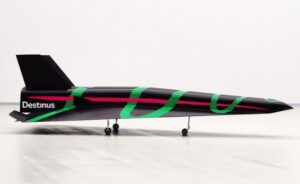If you`re considering designing your logo, I`m sure you know its importance as a leading visual for your brand.
That it`s often the first impression, people have of your business.
And the colors, fonts, and shapes you choose play a big part in determining how consumers feel about you.
You probably also know about versatility and why and how a logo works on numerous platforms and marketing materials.
And you definitely understand that if you get it wrong, it could turn people away and not towards your business.
You do, right?
Oh, the pressure!
Fortunately, logo design isn’t rocket science.
And with enough research and planning, you can design a logo that accurately conveys the essence of your brand, connects with your target audience, and works pretty much everywhere
But to make that happen, you need professional logo design tips for DIY business owners.

1 – Decide what you want to convey
Have you thought about how you want people to feel when they see your logo?
You should because apart from brand recognition, that’s what your logo’s for.
Your logo design determines how your target audience feels. And you control that by conveying your brand’s purpose and essence through it, using what’s known in the logo design world as creating with intention.
Creating with intention ensures your logo’s a perfect visual reflection of your business and resonates with your ideal customer.
Logo design tips on how to create with intention:
- What image would help convey your purpose? Think of an image that could accurately represent your company? It can either relate directly or encapture your brand essence.
- What visual accurately represents your image? Choose a visual style that symbolizes your brand’s personality and accurately portrays it to the world with your image in mind. Fun, serious, adventurous, homely, etc.
- Which parts of your business name are essential? Is your business name long or short? Do you have a tagline? The best logos are simple in design to remain versatile; only use what’s required to convey your brand’s message and connect with your audience.
2 – Do some logo inspiration research
The hardest part of creating a logo is knowing where to start, often being stuck for ideas.
If that`s you, think of your logo as a jigsaw, and all you’ve got to do is bring the right pieces together.
You can find those pieces and spark your imagination by reviewing other logos for inspiration, reading design magazines or visiting some great logo inspiration sites. Then make a note of what you like about them and what`s memorable.
Also, research your most successful competitors to see which colors, fonts, and style they use. There’s a reason for their success, and a logo’s part of it!
3 – Choose the type of logo
There`s a lot of logotypes available, and at this early stage, it`s best not to lock yourself into one single design.
Besides, you’ll need four to ensure your logo’s versatile!
- Parallel – Includes your name, tagline, and icon, perfect for a website header
- Stacked – A vertical parallel logo design, ideal for cloths tags and where horizontal space is tight.
- Wordmark – Just your name, works well on printed marketing materials like business cards, etc.
- Icon – Perfect for your email gravatar and social media avatar.
Here’s how you create them:
Name-based logos:
- Combination Marks – A combination logo combines both words and images, such as your name, tagline, and icon, perfect for your primary/parallel logo design.
- Wordmark Logos (Logotypes) – Wordmark logosconsist of your company name and sometimes a tagline. Take it from your combination.
- Letter marks – Are abbreviations of your business name, usually designed using a catchy font to engage the viewer’s attention.
Icon based:
- Brand Marks – Now for your icon, brand mark logos consist of a graphic symbol representing a real-world object.
- Abstract Logo Marks – Consists a symbol, could be anything, as long as it suits your business, think Nike.
- Mascots – An imaginary character that represents your brand, like a spokesperson. For example, Mailchimp and Pringles.
Start with a wordmark, add a tagline, and then an icon, and you`re done.
4 – Choose a design tool
Now you’ll need a design tool to start creating your logo.
Even if you don’t have any experience with graphic design softwares, you won’t have trouble finding logo design softwares for beginners. These softwares are usually very user friendly, and include image editing, vector art, 3D sculpting, etc.
Most platforms are drag and drop, making them very easy to use. And once you’ve finished creating your logo, you can also use them to create social media images or banners for your website.
If you do have some experience, you can use one of the licensed graphic design softwares and achieve a more customizable design.
5 – Consider your font selection
Mascots and abstract logos are one thing, but your logo won`t speak to your target audience if your name doesn’t look right.
And it makes sense; after all, it’s the primary identifier of your business.
Every font has a specific dialect, and your choice must match your brand’s voice, personality, and that of your target audience if it`s going to get your marketing message across.
And while there are over 130 thousand fonts available, they come from a smaller range of typefaces.
The four primary types and styles and are:
- Serif type styles
- Sans serif type styles
- Script styles
- Decorative fonts
These four typefaces will give you all the fonts you`ll need.
6 – Choose your color pallet
Most of us have a favorite color, but did you know your target audience does too?
And it’s for a good reason.
Studies suggest that colors affect our mood and influence our perception of a business, including our buying decision.
And as you’ll probably be using them on your website, social media feeds, in-store signage, and marketing emails to create brand cohesion, chosen ones that send the right message is essential to your success.
You must ensure your colors make people feel the right way, and you discover how by researching a color psychology chart.
Once you’ve found colors that set the right tone (get it), keep it simple, and use no more than two in your logo design.
More on simplicity next:
7- Keep the design simple
The most memorable business logos are simple in design; Facebook, Twitter, and Apple are excellent examples of simplicity.
It’s because great design is functional and creates a solution while making it look efficiently executed. And that makes it easier for you to create your logo.
The strategy for achieving simplicity is to remove clutter from your logo, reduce the elements, and ensure every piece of your logo has a clear purpose.
So, if a detail creates a busy design, interferes with its functionality, or reduces its legibility, get rid of it.
When designing your first logo, a wise option is to start with a wordmark and find a font that speaks your language and suits your style. Then consider adding shapes.
8 – Consider using shapes
Just as with color, research shows that we hold associations with specific shapes, and they can amplify your brand’s intended message to your target audience.
For example, shapes with edges and sharp lines depict strength, while rounded edges are softer thus more approachable.
And when it comes to logo design, triangles are the most used shape out of all geometric designs.
It`s because they encourage eye movement throughout the logo and create a sense of balance, crucial for creating the perfect DIY business logo.
Conclusion
Creating a logo can be as easy or complex as you want to make it.
We advise easy.
Follow our logo design tips and keep it simple.
Choose no more than two fonts and colors.
And go for balance over detail every time.
Simple!
The post Logo Design Tips for DIY Business Owners appeared first on The Startup Magazine.








